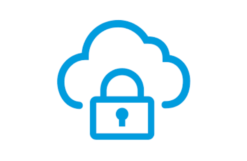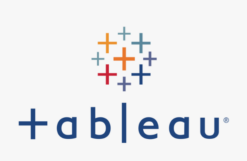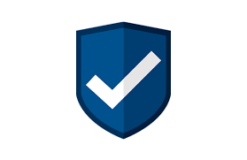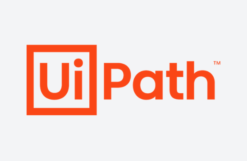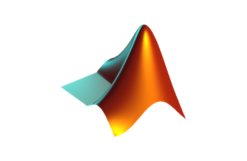Duration: 5 days – 35 hrs
Overview
Learn the basics of computer hardware, software, mobile computing, networking, troubleshooting, and emerging technologies.
In this course, students will identify PC components, work with files and folders, and conduct basic software installations. This course will provide students with the fundamental skills and concepts required to maintain, support, and work efficiently with personal computers.
In addition, it covers the essential skills and information needed to set up, configure, maintain, troubleshoot, and perform preventative maintenance of the hardware and software components of a basic personal computer workstation and basic wireless devices. Students will also implement basic security measures and implement basic computer and user support practices..
Objectives
- Identifying and explaining computer components
- Setting up a workstation, including conducting software installations
- Establishing network connectivity
- Identifying compatibility issues and identifying and preventing security risks
- Managing the safety and preventative maintenance of computers
Audience
- Entry-level and newly hired technical professionals, including PC support, help desk, and networking professionals
- Sales and marketing professionals looking to increase their ability to communicate with technical professionals and increase sales
- Executives who seek better-informed decision making
- Professionals seeking to prepare for the CompTIA IT Fundamentals+ Exam
Pre- requisites
- n/a
Course Content
Module 1 – Using Computers
Unit 1: Common
- Computing Devices
- Information Technology
- Personal Computers (PC)
- Mobile and IoT Devices
Unit 2: Using a Workstation
- Setting up a PC System
- Ergonomic Concepts
- Navigating an OS
- Using Input Devices
- Icons and Windows
Unit 3: Using an OS
- Functions of an Operating System
- Types of Operating System
- Virtualization
- Microsoft Windows
- Apple macOS and iOS
- Linux, Chrome, and Android
- File Explorer
- Windows Settings and Control Panel
- Using a Web Browser
Unit 4: Managing an OS
- Management Interfaces
- Process and Service Management
- Memory and Disk Management
- Command Line Interfaces
- Access Control and Protection
Unit 5: Troubleshooting and Support
- Support and Troubleshooting
- Identifying the Problem
- Understanding the Problem
- Resolving and Documenting the Problem
- Developing a Troubleshooting Approach
- Troubleshooting PC Issues
- Getting Support
- Using a Search Engine
Module 2 – Using Apps and Databases
Unit 1: Using Data Types and Units
- Notational Systems
- Units of Measure
- Data Types
- Data Representation
- The Value of Data
- Intellectual Property
- Data-driven Business Decisions
Unit 2: Using Apps
- Installing Applications
- Application Management
- Managing Software Licensing
- Productivity Software
- Collaboration Software
- Business Software
Unit 3: Programming and App Development
- Programming Logic
- Programming Languages
- Programming Concepts
- Object-Oriented Programming
- Scripting Languages
- Application Platforms and Delivery
Unit 4: Using Databases
- Database Concepts
- Database Structures
- Relational Methods
- Database Access Methods
- Application Architecture Models
Module 3 – Using Computer Hardware
Unit 1: System Components
Selecting a Computer
- Motherboard Components
- Processors
- Features of Processors
- Expansion Bus
- System Cooling
- BIOS and UEFI System Firmware
Unit 2: Using Device Interfaces
- Computer Connector Types
- USB and Firewire
- Graphic Devices
- Graphic Device Interfaces
- Input Devices
- Configuring Peripherals
- Bluetooth and NFC
- Networking Interfaces
Unit 3: Using Peripheral Devices
- Installing and Uninstalling
- Peripherals
- Display Devices
- Display Settings
- Multimedia Ports and Devices
- Printer Types
- Installing and Configuring a Printer
- Scanners and Cameras
Unit 4: Using Storage Devices
- System Memory
- Mass Storage Devices
- Optical Discs and Drives
- Flash Memory Devices
Unit 5: Using File Systems
- Managing the File System
- Folders and Directories
- File Explorer
- Files
- File Attributes and Permissions
- Searching for Folders and Files
- File Types and Extensions
Module 4 – Using Networks
Unit 1: Networking Concepts
- Network Components
- TCP/IP
- Internet Protocol
- Address Resolution Protocol
- DNS and URLs
- Internet Application Services
Unit 2: Connecting to a Network
- Internet Service Types
- Wireless Internet Services
- Setting Up a Wireless Network
- Configuring a Wireless Client
Unit 3: Secure Web Browsing
- Safe Browsing Practices
- Configuring Browser Security
- Managing Cookies and PII
- Digital Certificates and Antiphishing
- Enabling a Firewall
Unit 4: Using Shared Storage
- Local Sharing and Storage
- Windows File Sharing
- Hosted Sharing and Storage Backups
- Windows Backup
Unit 5: Using Mobile Devices
- Using a Mobile Device
- Mobile Applications and App Stores
- Network Connectivity
- Email Configuration
- Synchronization and Data Transfer
Module 5 – Security Concepts
Unit 1: Security Concerns
- Computer Security Basics
- Social Engineering
- Business Continuity
- Disaster Recovery
Unit 2: Using Best Practices
- Securing Devices Malware
- Preventing Malware Infections Spam
- Software Sources and Patch Management
Unit 3: Using Access Controls
- Access Controls
- User Account Types
- Authentication Factors
- Uses of Encryption
- Password Cracking and Management
Unit 4: Behavioral Security Concepts
- Policies and Procedures
- Handling Confidential Information
- Acceptable Use Policies
- Expectations of Privacy



